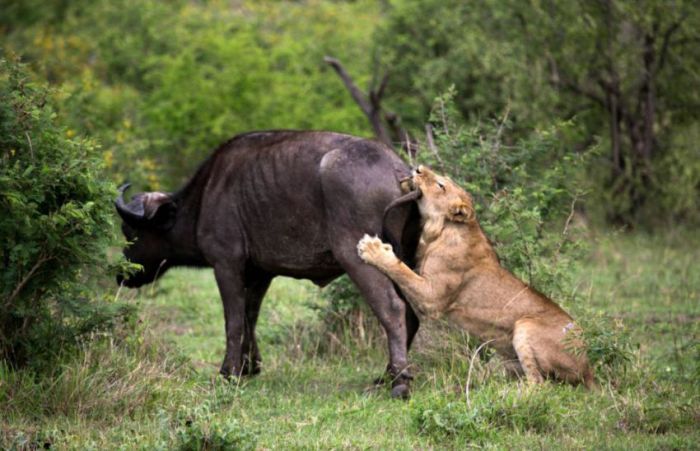|
|
Lioness Against A Buffalo With Friends
|
Social behavior
Herd size is highly variable. The core of the herds is made up of related females, and their offspring, in an almost linear dominance hierarchy. The basic herds are surrounded by subherds of subordinate males, high-ranking males and females and old or invalid animals. The young males keep their distance from the dominant bull, who is recognizable by the thickness of his horns. During the dry season, males will split from the herd and form bachelor groups. Two types of bachelor herds occur: ones made of males aged four to seven years and those of males 12 years or older. During the wet season, the younger bulls rejoin a herd to mate with the females. They stay with them throughout the season to protect the calves. Some older bulls cease to rejoin the herd, as they can no longer compete with the younger, more aggressive males. Males have a linear dominance hierarchy based on age and size. Since a buffalo is safer when a herd is larger, dominant bulls may rely on subordinate bulls and sometimes tolerate their copulation.
Adult bulls will spar in play, dominance interactions or actual fights. A bull will approach another, lowing, with his horns down and wait for the other bull to do the same thing. When sparring, the bulls twist their horns from side to side. If the sparring is for play, the bull may rub its opponent’s face and body during the sparring session. Actual fights are violent but rare and brief. Calves may also spar in play, but adult females rarely spar at all.
|
|









